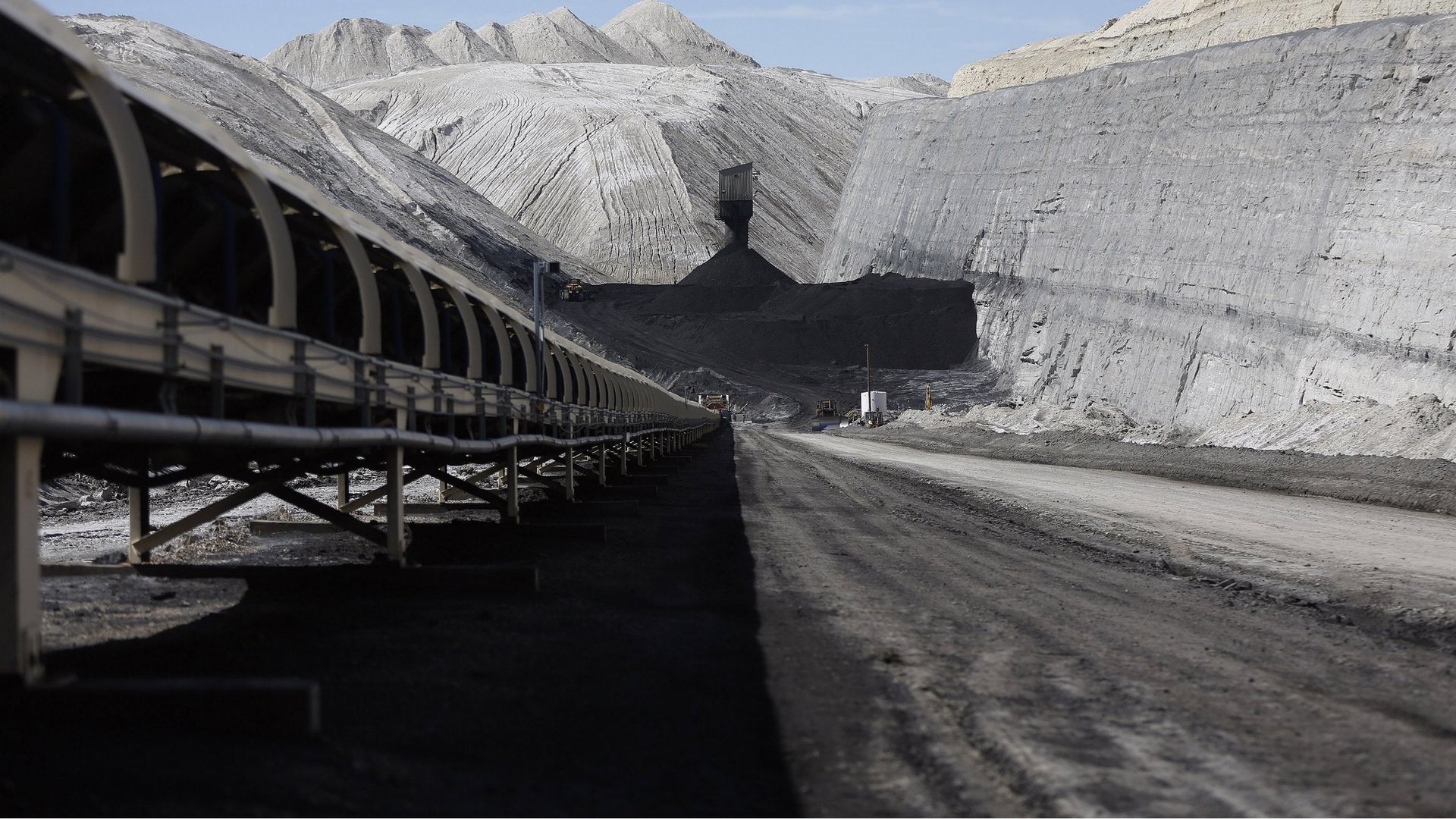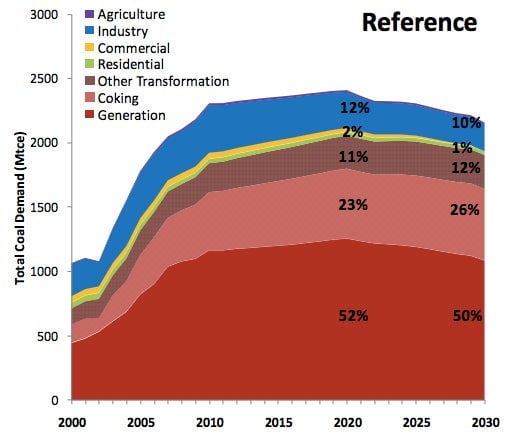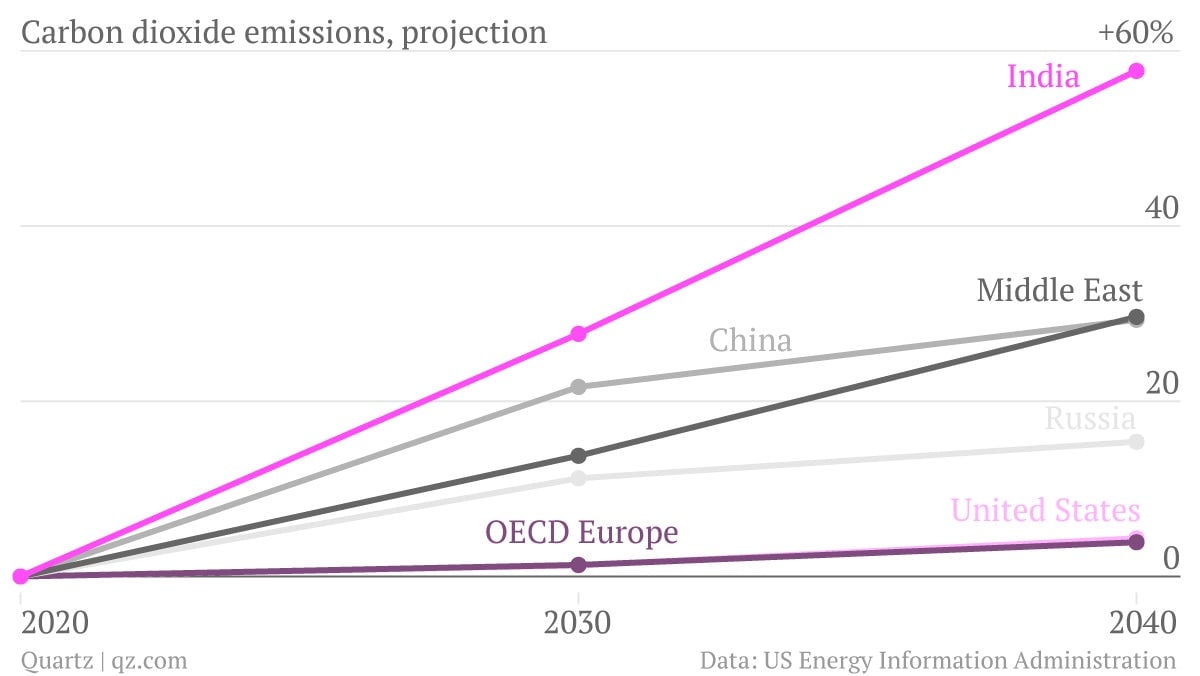Everyone is cutting their carbon emissions—except India
The 30% cut in US carbon emissions proposed today by the Obama administration only directly affects companies operating in the US, but the policy is aimed as much—possibly more—at the rest of the world as at Americans. The developing world will be responsible for almost all growth in greenhouse gases in the next couple of decades.


The 30% cut in US carbon emissions proposed today by the Obama administration only directly affects companies operating in the US, but the policy is aimed as much—possibly more—at the rest of the world as at Americans. The developing world will be responsible for almost all growth in greenhouse gases in the next couple of decades.
The proposal allows the United States some leverage in international climate change negotiations, where Chinese and Indian representatives have argued that the US should take the lead in reducing emissions because of its historical contribution to climate change.
China, with its voracious appetite for coal, is now the largest producer of emissions, but the next time the subject is discussed, during the Group of 7 meeting on June 4 and 5 in Brussels, the spotlight may be more on India.
To be sure, China’s future CO2 emissions now dwarf everyone else’s, as you can see in this chart, based on data from the US Energy Information Administration (EIA):

But China is also in the process of changing (paywall) its fuel consumption. Driven by rising popular discontent with coal-fired pollution, Beijing is shifting to far more consumption of natural gas. It’s impossible to say specifically at the moment how China’s emissions will be affected, but they will likely be lower than projected.
Even before this politics-driven shift, some major forecasters differed from the projections above. Here is one from ExxonMobil, showing Chinese emissions peaking earlier—around 2025—and going on to steadily fall.

Similarly, an analysis by the China Energy Group at Lawrence Berkeley Laboratory forecasts that China’s coal consumption peaks in 2020. The chart was produced in 2011, before Beijing’s recent stampede to reduce coal consumption.

Greenpeace also forecasts global greenhouse gas emissions peaking before 2020.
The Obama Administration’s proposal is to make the cuts against a 2005 baseline. Since US emissions have already plunged since the 2008 financial crisis, that will mean an estimated 17% reduction from current emissions. LBL’s David Fridley told Quartz that the proposal “represents an absolute cut, which is significant,” because China’s numbers represent only a decline in the growth of CO2 emissions. By 2020—if the US cuts endure after an already-initiated battle (paywall) by industry against them—they will result in an additional CO2 emissions drop of about 8%.
For much of the developing world, steep reductions even in the growth of emissions will be difficult before 2020—they are far more likely to happen in the next decade and beyond. So in a realistic discussion of emissions cuts, it’s instructive to focus on what happens from 2020 to 2040.
This chart, also based on EIA data, indicates that over that period, China’s not the big problem:

India emerges as a large outlier (as is the Middle East, to a lesser extent). India’s emissions continue to soar from 2020 on, according to the EIA projection, while other countries reduce their carbon output.